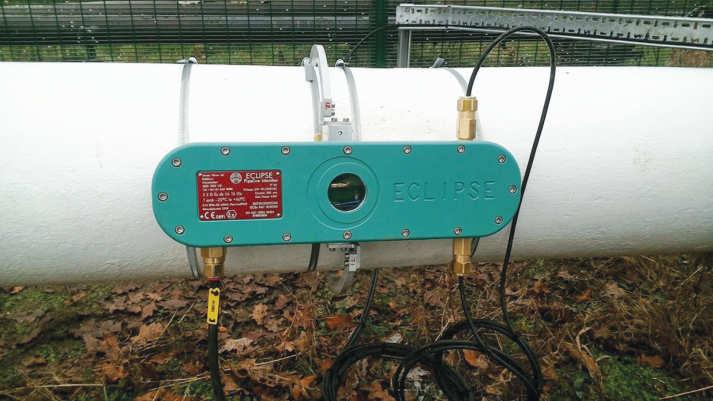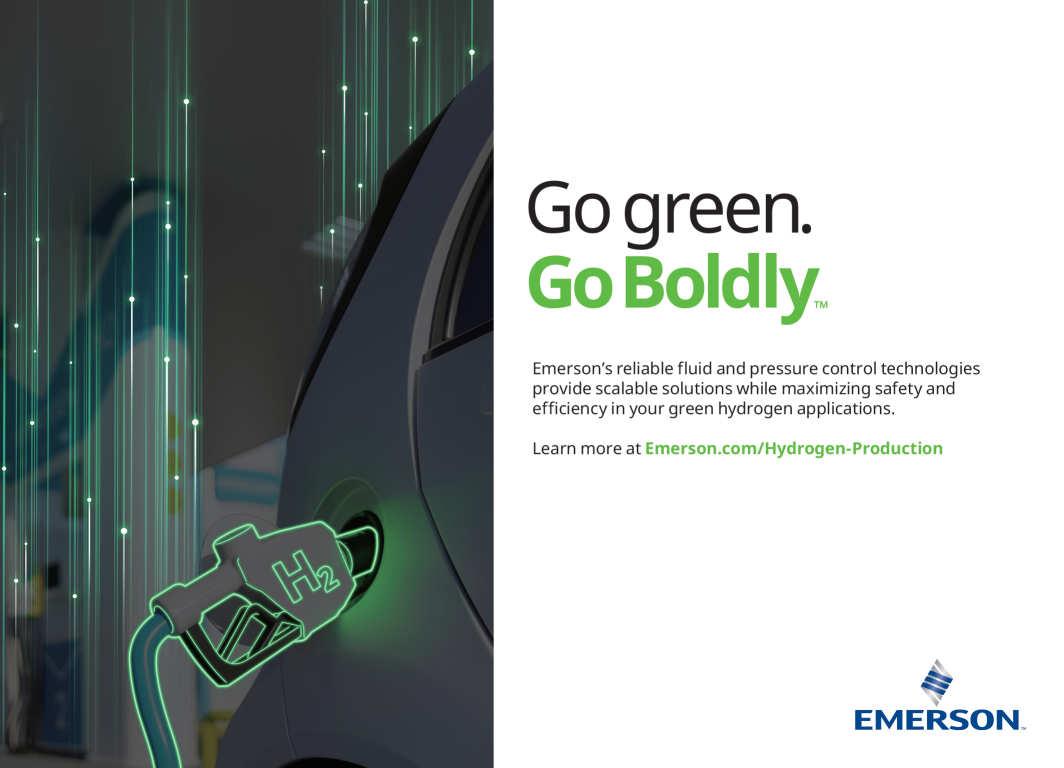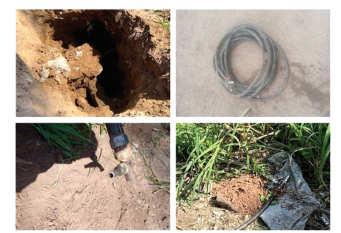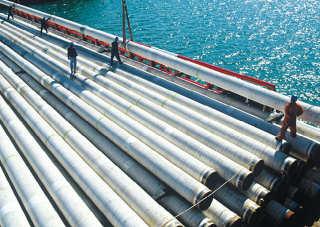
7 minute read
Non-intrusive leak detection for pipelines
WHEN IT COMES to transporting any gas or liquid, there will always be debate over the safest option. In the Middle East, this debate recently resurfaced in relation to tankers versus pipelines. Conversations around adjusting fuel export routes to bypass the Strait of Hormuz have found that pipelines carry less risks than shipping via tankers.
Commitment in the Middle East to pipelines as the preferred mode of fuel transportation can also be seen in some countries’ planned oil and gas transmission pipeline length additions. For example, Saudi Arabia has seven planned and announced pipelines between 2022 and 2026 totalling 1,559 km of additional pipeline. Likewise, Qatar has the installation of several pipelines over 250 km planned to increase their liquefied natural gas output. While pipelines continue to be the safest and most preferred means of fuel transportation in the Middle East, they are not without their challenges, so a leak detection system is vital to reduce the consequences of a leak.
The inevitability of corrosion
Corrosion on a pipeline is the equivalent of what wrinkles signify: the inevitable sign of ageing. Corrosion is the gradual degradation of metal, and while pipelines with outdated infrastructure are more susceptible to the environmental properties of soil, air and water, that can cause and accelerate corrosion, there isn’t a pipeline in existence which can escape the process itself. The annual cost of corrosion globally is thought to have totaled more than US$60bn in the past few years, and it is one of the leading causes of pipeline leaks.
As well as being a naturally occurring process, corrosion can be caused by a range of other factors. For example, some points on a liquid pipeline are more vulnerable to overpressure, meaning there is a risk that the maximum allowable operating pressure
(MAOP) could be exceeded or underpressure, which is when the lowest allowable operating pressure (LAOP) is reached. Both pressure violations have the potential to cause a leak, but LAOP in particular presents a risk of corrosion when vapour bubbles form inside the pipeline through a process called column separation. If the bubbles collapse, they can emit shockwaves throughout the pipeline, and over time this recurring event can cause corrosion.
Pipelines experiencing corrosion, or which are at risk of corrosion, have an increased likelihood of leak or rupture, which can cause collateral damage to the environment and human, animal and plant life if the pipeline runs through a high consequence area (HCA). Fines and clean-up costs for leaked product can end up costing more than the lost product itself, and a pipeline company’s reputation can also suffer. Corrosion on pipelines in the Middle East is inevitable, which is why leak detection is crucial.
Non-intrusive leak detection solutions are best suited to pipelines at risk of or experiencing corrosion because they can be retrofitted to the pipeline without the risk of damaging the pipeline’s integrity further. For example, Atmos Eclipse has a clamp-on design which removes the need to drill, weld or cut the pipeline for tapping points (see Figure 1) while still being able to measure flow, pressure and temperature data for detecting leaks.
Oil
And Security Of Supply
Another challenge facing Middle Eastern pipelines involves sustaining the supply of crude oil. At one point, the Middle East and North Africa regions made up 50% of global oil reserves. Increase in demand and rising prices for oil have brought significant economic growth to the Middle East via their oil pipelines.
But now, there is a risk to the security of supply of oil from the Middle East when climate change and decarbonisation are considered. Paired with the fact that considerable investment is required from the Middle East to meet its reduction in carbon emissions targets, the implementation of a non-intrusive leak detection solution has never been more useful, because it can help ensure the amount of product lost is reduced to a minimum when a leak occurs, and environmental standards are less likely to be violated.
Remote power to remote locations
Because more than 80% of the Middle East is desert, many of the region’s pipelines pass through a remote location at some point in their journey. For example, Abu Dhabi’s Habshan-Fujairah Pipeline is a crude oil pipeline spanning 380 km and travels through deserts and mountains before reaching the Gulf of Oman.
Many challenges can impact pipelines running through remote locations too, making leak detection an essential solution. For example, performing site visits for a pipeline in the Middle Eastern desert can be a dangerous and costly process if done regularly, and the effects of Covid-19 have resulted in reduced staff numbers when it comes to pipeline operations, so there is now a need for pipelines in remote locations to be monitored with effective remote operations.
Non-intrusive instrumentation such as Atmos Eclipse benefits areas with limited power or communications because it can be powered by wind and solar energy for zero downtime. It has a flash memory available in case of power outages too, making it ideal for use on pipelines with power supply challenges at their installation site.

Pipeline theft
With the price of fuel being affordable in some Middle Eastern countries and not in others, this presents a risk of pipeline theft because thieves are known to see an oil pipeline as a theft opportunity that can feed their ongoing fuel smuggling or other criminal operations.
To detect pipeline theft while remaining inconspicuous, self-contained data acquisition units such as Atmos Odin can be installed to identify and locate even the tiniest leaks while being easily concealed due to their size.

TotalEnergies Marketing Belgium: a case study
Atmos Eclipse can be buried to a depth of two metres, reducing the likelihood of it being spotted by pipeline thieves. It was recently used by TotalEnergies Marketing Belgium to detect more than 12 separate theft events on their multi-product pipeline.13
The customer’s pipeline network spans more than 100 km and transports diesel, gasoline, heating oil and jet fuel. A challenge the customer faced was that they needed a theft detection solution but intrusive pressure transmitters were not compatible at some of the locations on their pipelines and presented
DNV to launch second phase of offshore hydrogen pipelines JIP
DNV IS LAUNCHING the second phase of H2Pipe, a joint industry project (JIP) aiming to develop a new code for the design, requalification, construction and operation of offshore pipelines to transport hydrogen –either pure or blended with natural gas a risk to the pipelines’ integrity.
DNV’s Hydrogen Forecast to 2050 anticipates that more than 50% of hydrogen pipelines globally (and as much as 80% in some regions) will be repurposed from existing natural gas pipeline networks, as it is expected to cost less than 35% of new builds.
Industry players are exploring ways of transporting hydrogen as an additive or replacement for natural gas, but currently, offshore pipeline codes insufficiently cover the transport of hydrogen or hydrogen blends by offshore pipelines. A special concern in this respect is the potential detrimental influence of hydrogen on resistance to cracking in carbon steels. To support the uptake of hydrogen as an energy carrier, it is imperative to update the standard, to reach design and material requirements that do not compromise pipeline integrity and safety.
Phase 2 of H2Pipe is planned to start in Q1 2023 and last two years. It will consist of a comprehensive experimental test programme to enhance the understanding of the governing hydrogen embrittlement mechanisms and how hydrogen affects the integrity of the line pipe material. In addition to the experimental test campaign, Phase 2 will also include tasks such as a feasibility level design of offshore hydrogen pipelines and a risk assessment study to look at safety aspects of offshore hydrogen pipelines. The primary outcome of Phase 2 of the JIP is expected to be a detailed guideline offering specific guidance for use in design and re-purposing of offshore pipelines for hydrogen transport.
They opted for Atmos Eclipse because of its clamp-on design, ability to be easily retrofitted and compatibility with pipelines up to 24 inches in diameter.
Atmos Eclipse supported their multimethod theft detection solution to detect more than 12 theft events and support their ongoing commitment to safe operations.
Non-intrusive leak detection is the future of pipeline operations
Pipeline operations in the Middle East can only be effective when they mitigate as much risk as possible. Although many leak detection options are available to pipelines running through this region, non-intrusive leak detection instrumentation is typically less expensive, can be easily installed to operational pipelines and is proven to support leak detection and theft detection systems to deliver high sensitivity, high location accuracy and short response times, all the while minimising false alarm rates n https://www.atmosi.com/en/solutions/leakdetection/?utm_source=PR&utm_medium=O RME+Feb+2023&utm_campaign=How+nonintrusive+leak+detection+can+improve+pipelin e+operations+in+the+Middle+East&utm_cont ent=Editorial
Saipem’s new pipeline repair technology achieves DNV qualification

SAIPEM’S GRIP & Metal Seal Connector, a patented technology for subsea pipeline repair, has received the Statement of Qualified Technology for sour service applications from DNV.
The Grip & Metal Seal Connector has been developed by Sonsub, Saipem’s centre of excellence for underwater technologies, automation and digital solutions. It is a unique diver/diverless solution for pipeline repair interventions as well as for pipeline tieins at a water depth of up to 2,000 m. The technology has been specifically developed for clad/lined pipelines with highly corrosive fluids and can also be used on carbon steel pipes with corrosion allowance. Its key features, including permanent repair, restoration of the pipe’s full structural integrity, no internal diameter reduction, a lightweight design and the ability to manage pipelines with multiple wall thicknesses, are characteristics not available in any other commercial product on the market.
A full-scale test programme on a prototype connector is presently underway in accordance with DNVGL-RP-F113, the recommended practice for subsea pipeline repairs. Upon completion of this programme, a DNV type approval certification will be issued, thus allowing Sonsub to commercialise the Grip & Metal Seal Connector in key prospective areas, primarily in the Eastern Mediterranean Sea, Black Sea and the Middle East.
Crack assessment methods for pipelines
THROUGH THE YEARS, a number of methods have been used to assess the significance of crack-like defects in pipelines. Some methods have been developed from first principles and fracture mechanics, but other, more empirical methods have been developed to better account for observable complex mechanisms.
In an article on its website, Rosen examines the different methods currently available and outlines the underlying assumptions upon which each method relies, to help readers select the most appropriate method to assess their pipeline.
It concludes that one method is not necessarily “better” than another. Each method has its advantages and disadvantages, which may depend on the particular material and type of crack. Constrained by the data available and the set of assumptions made, a decision choosing one method over the other is eventually made. If time-dependent growth is to be considered, further complexities and considerations are required for the assessment of cracklike anomalies in a pipeline. It is good practice to always seek expert advice prior to assessing crack-like anomalies, to ensure that the most appropriate method is chosen and the inputs used are the most suitable for that method.
https://www.rosen-group.com/global/company/insight/news/2022/Decisions-DecisionsWhich-Choice-to-Make.html





